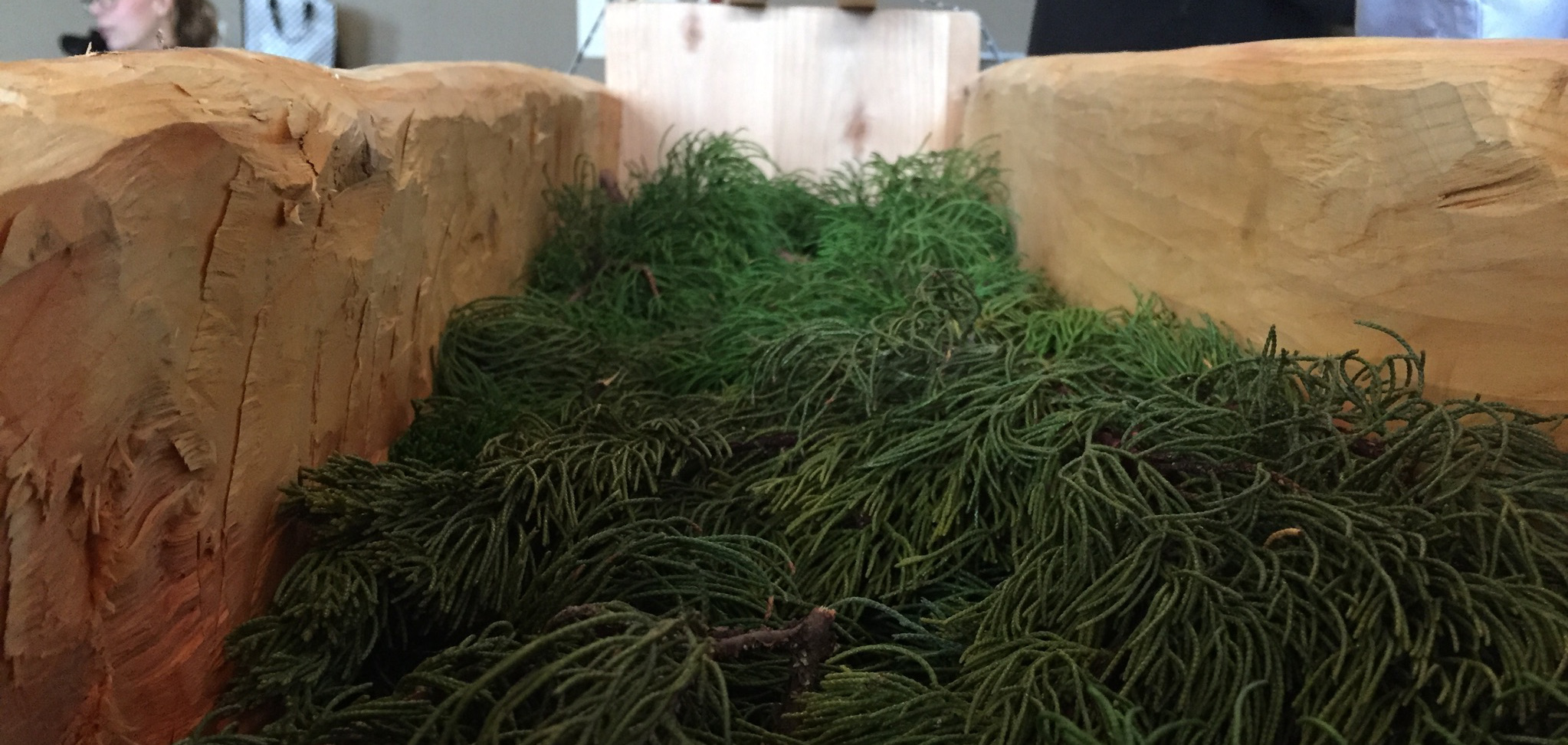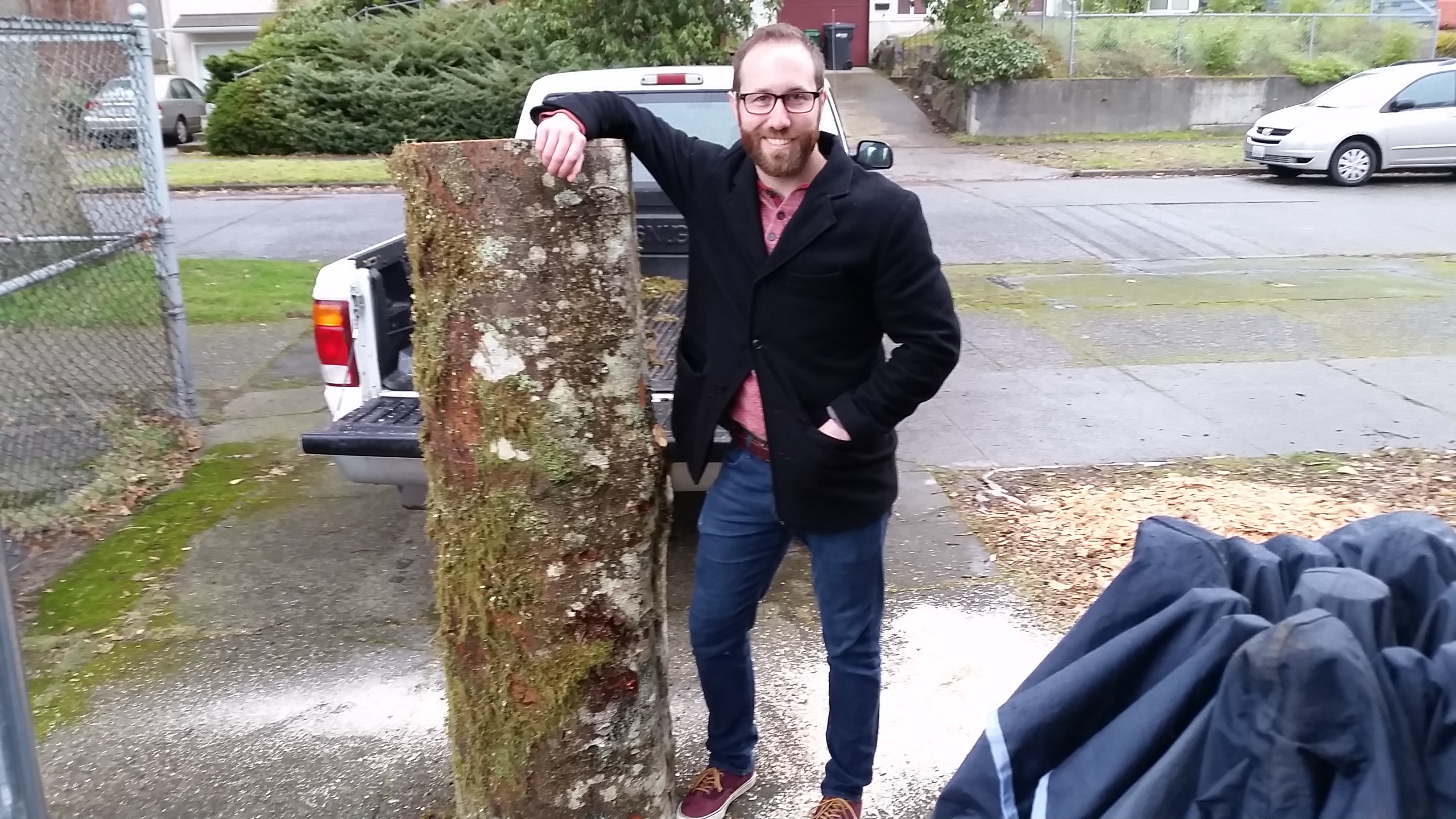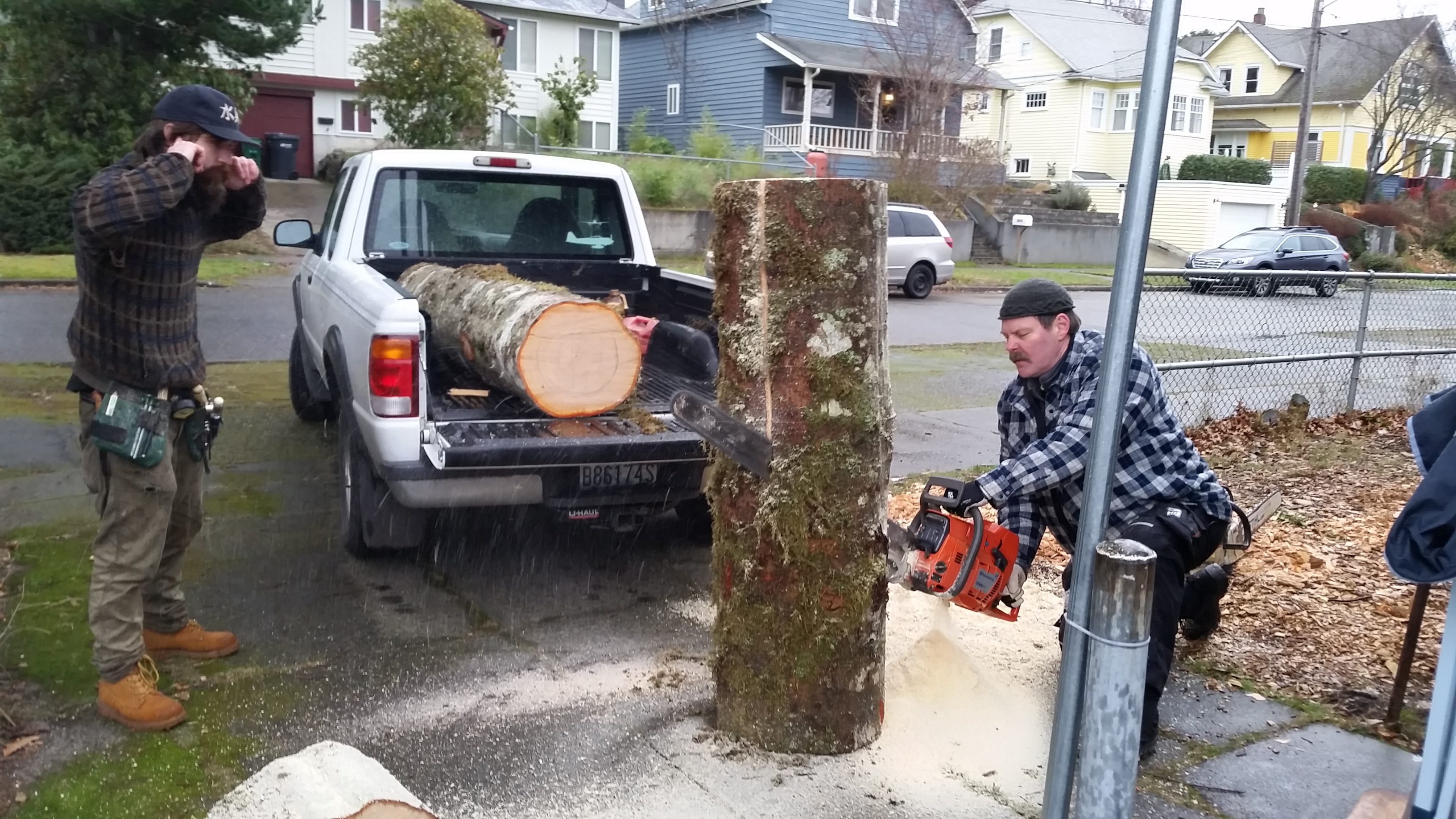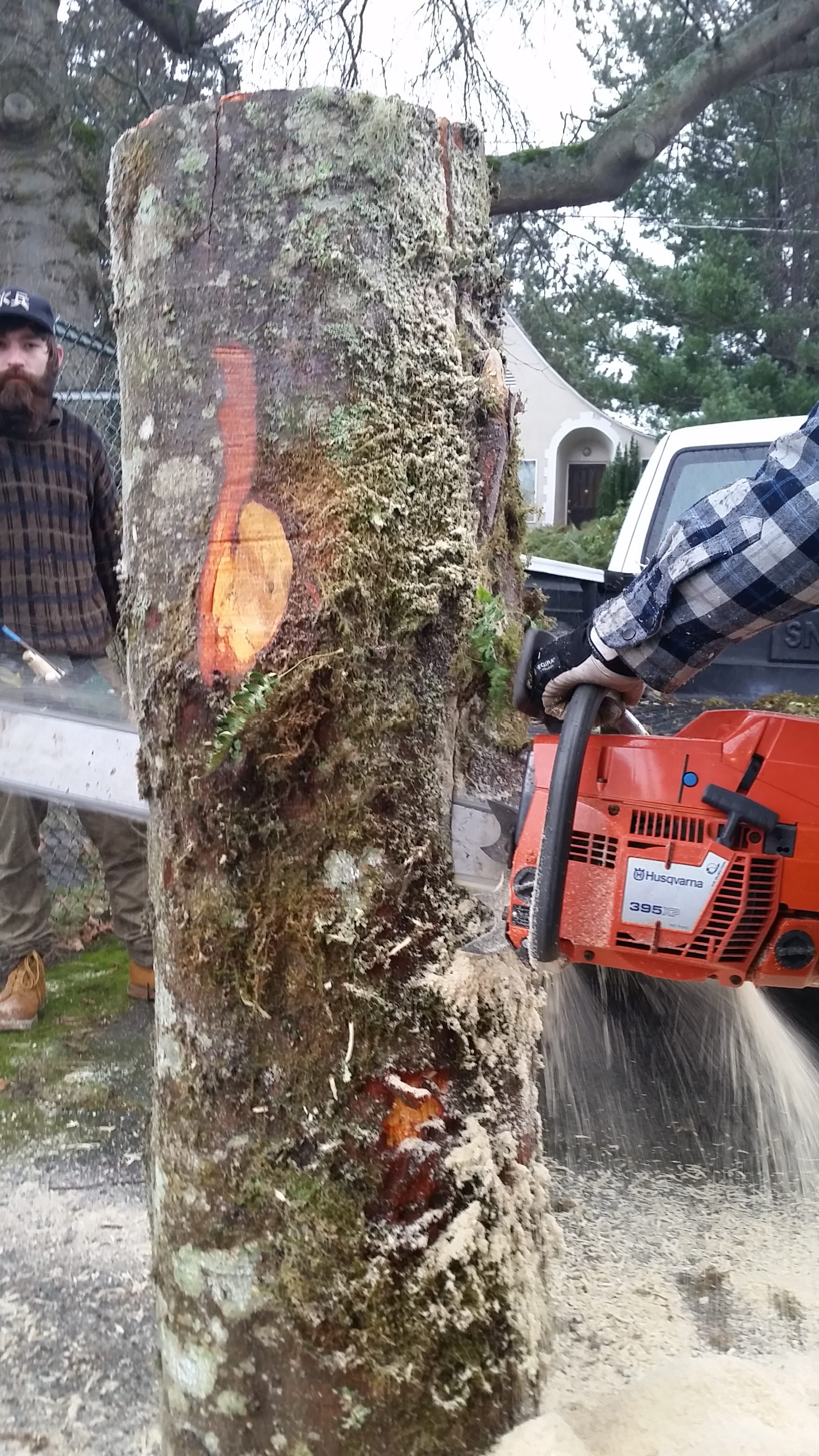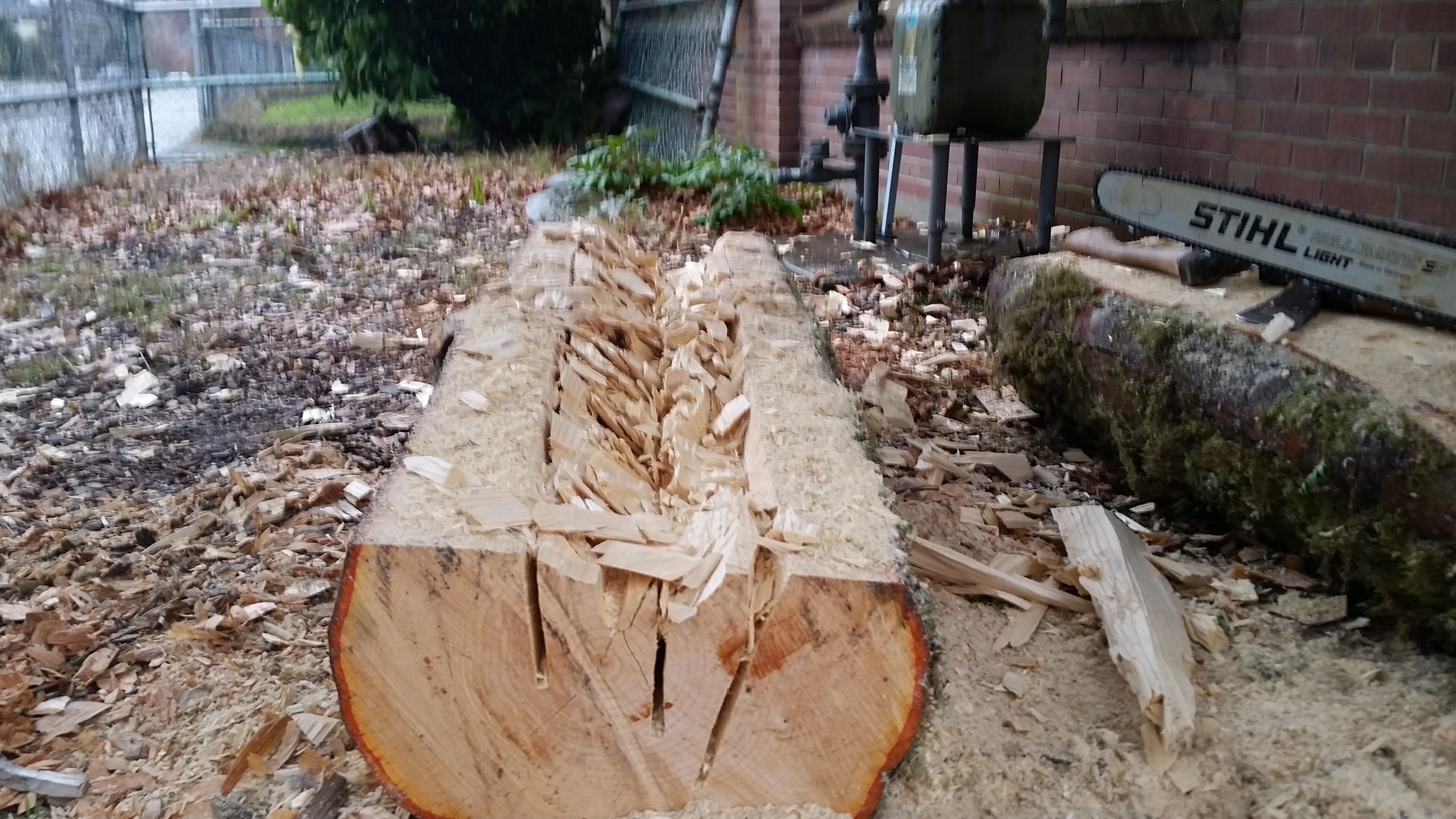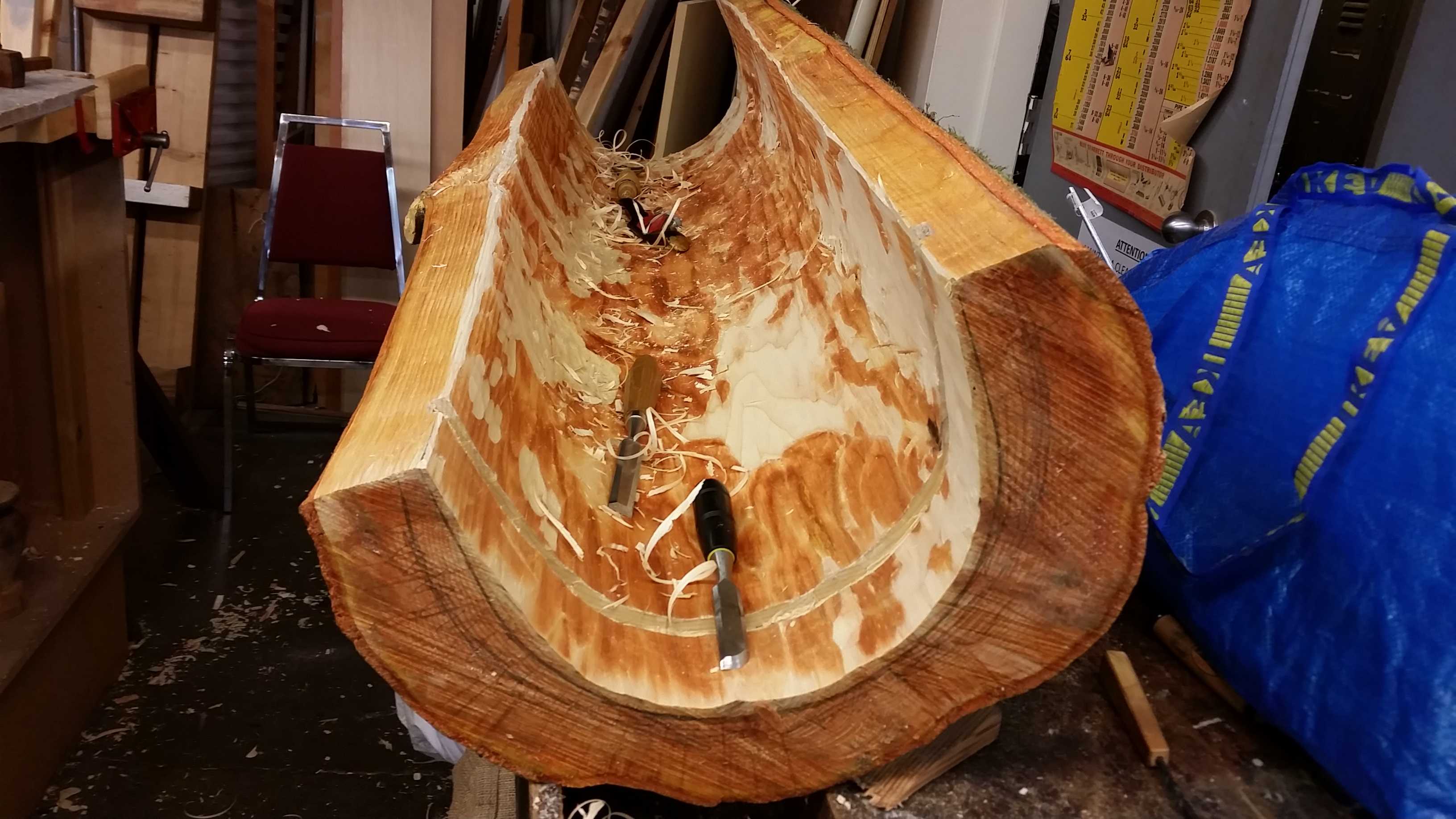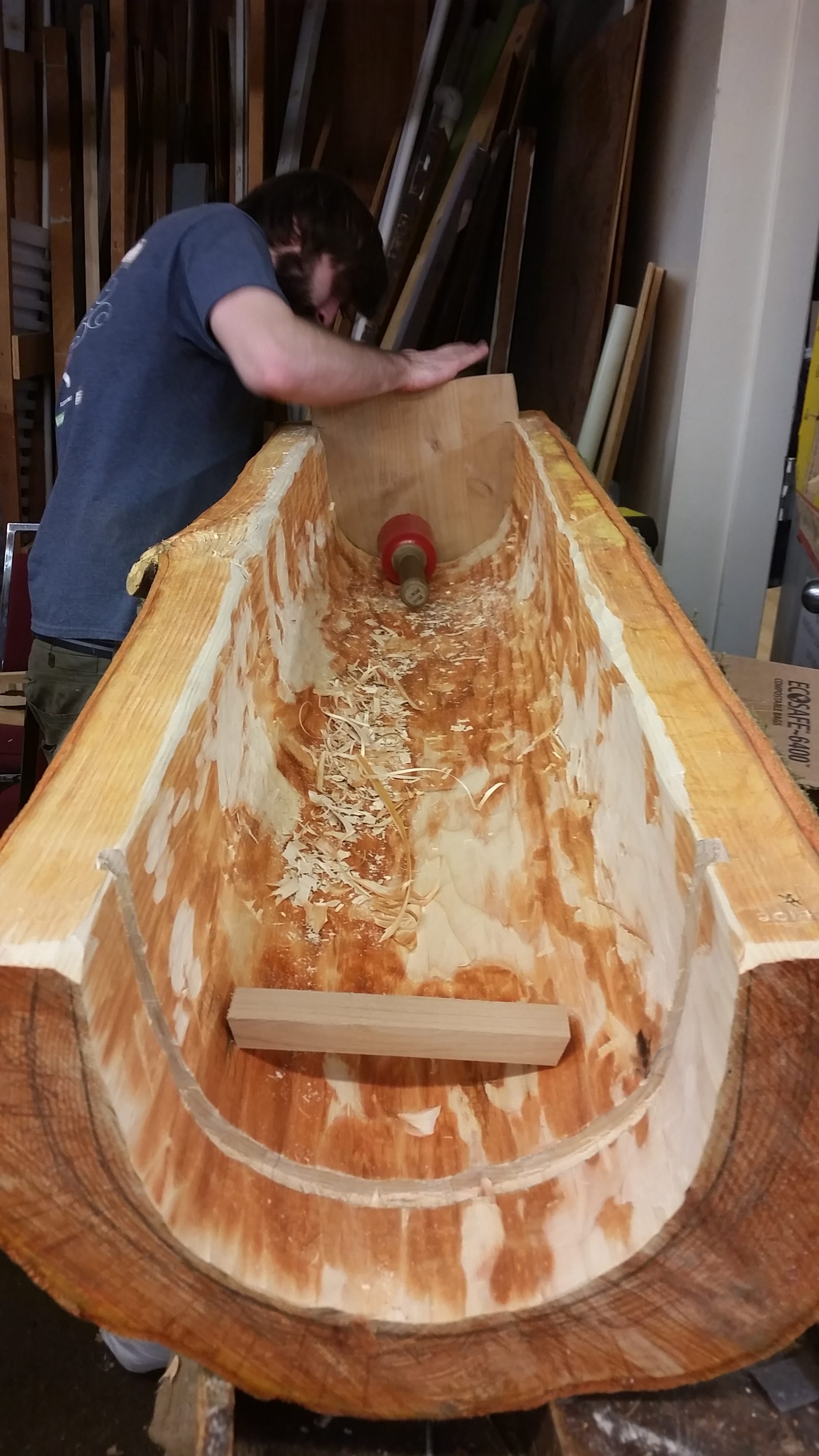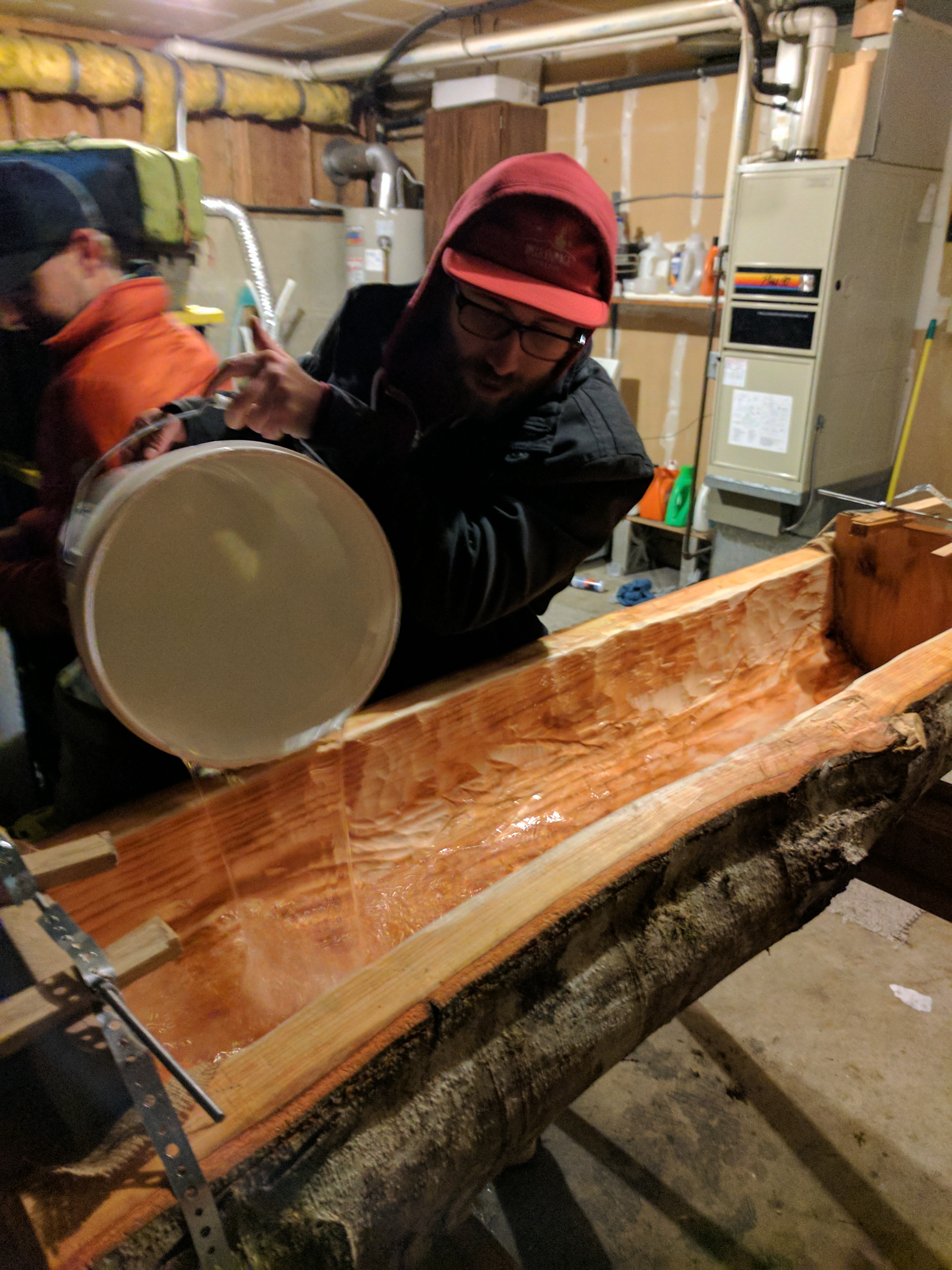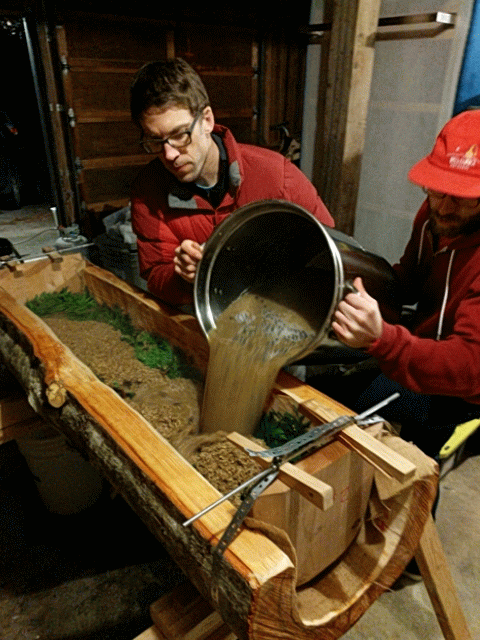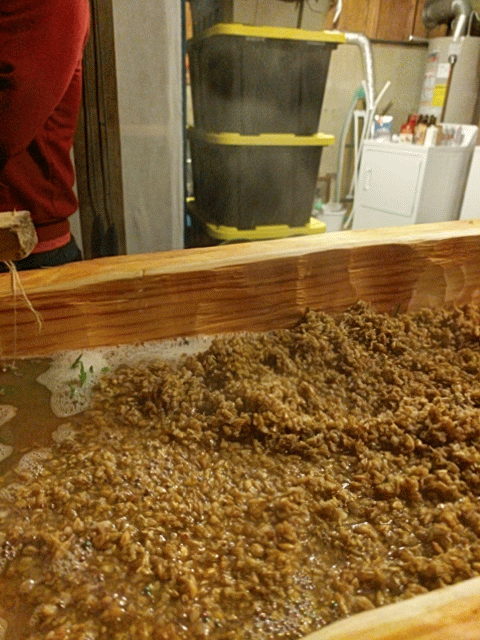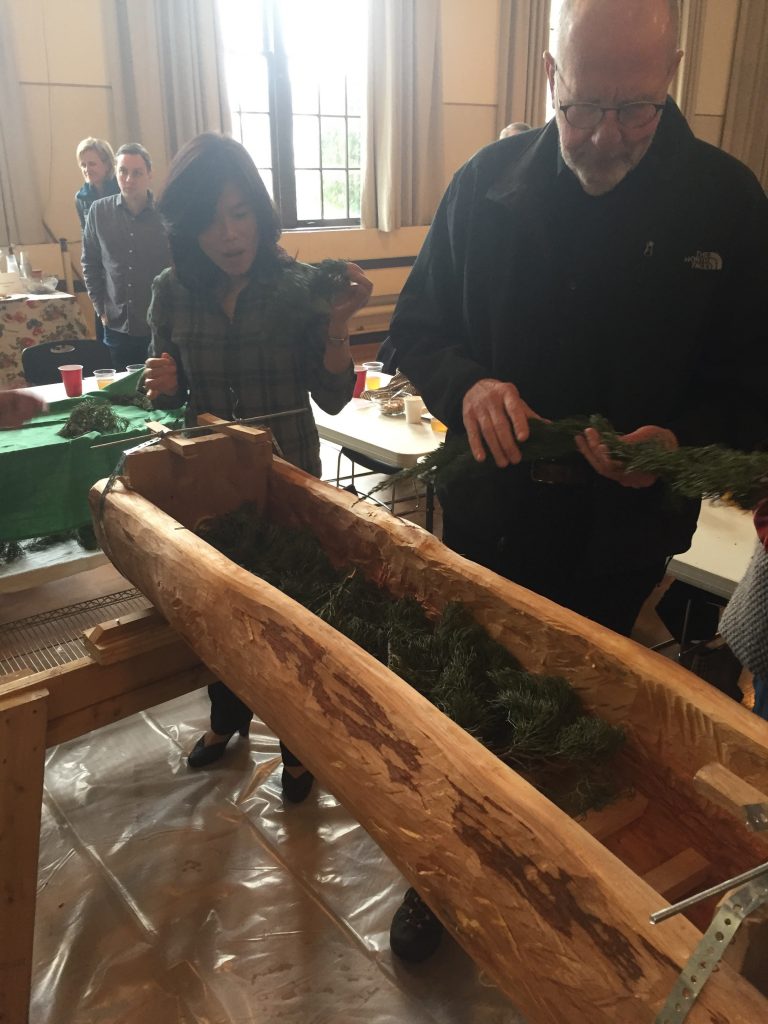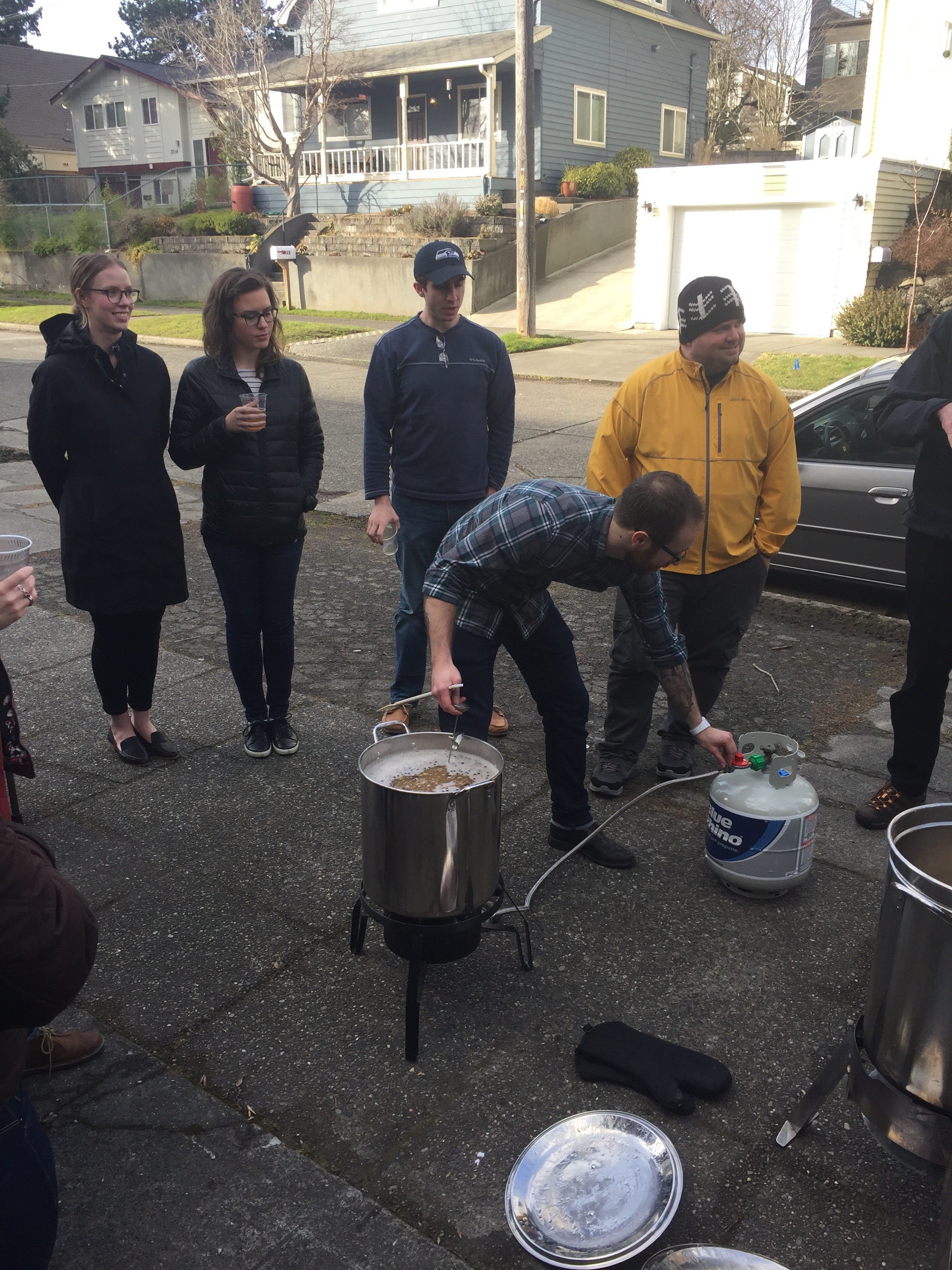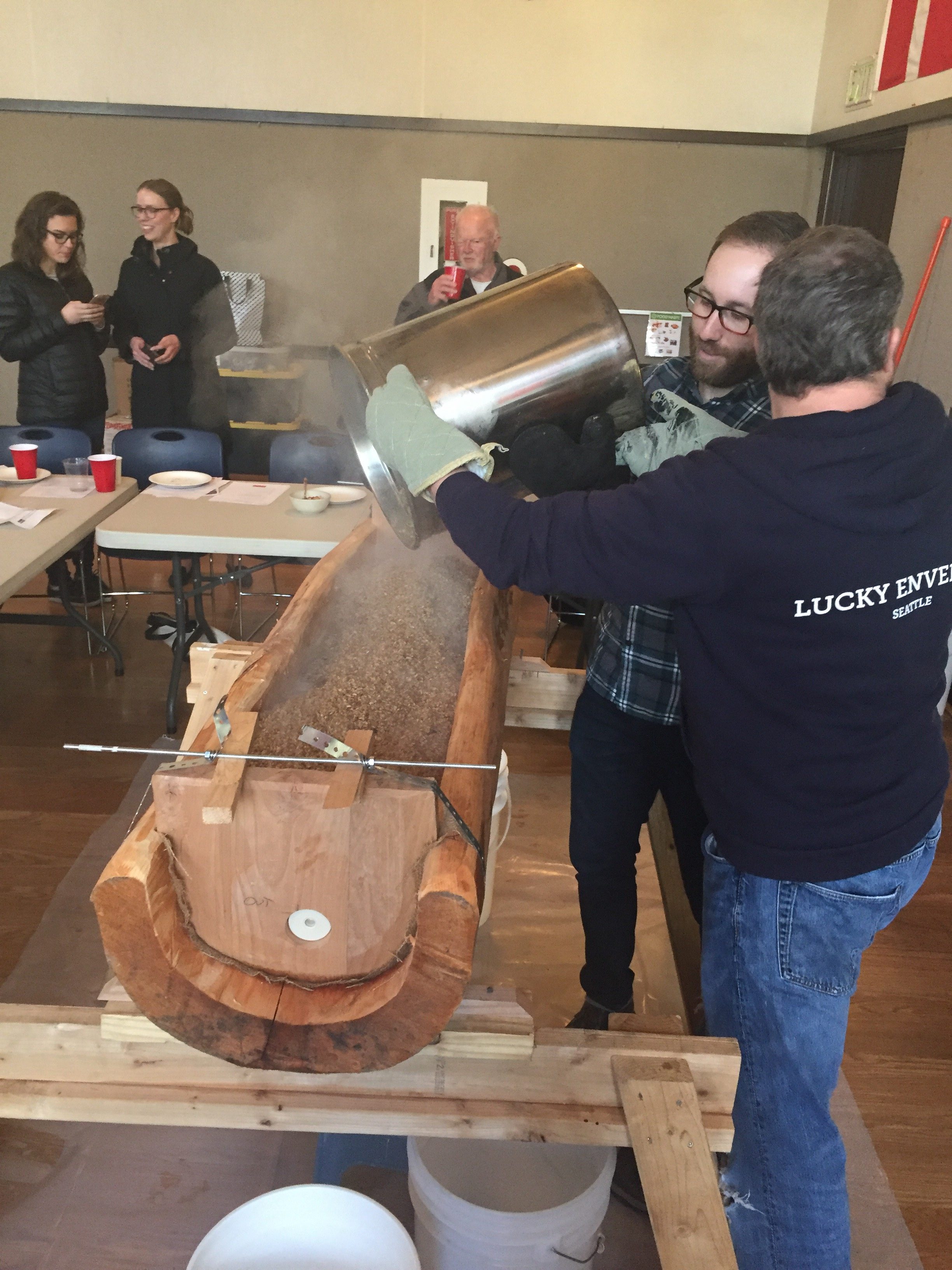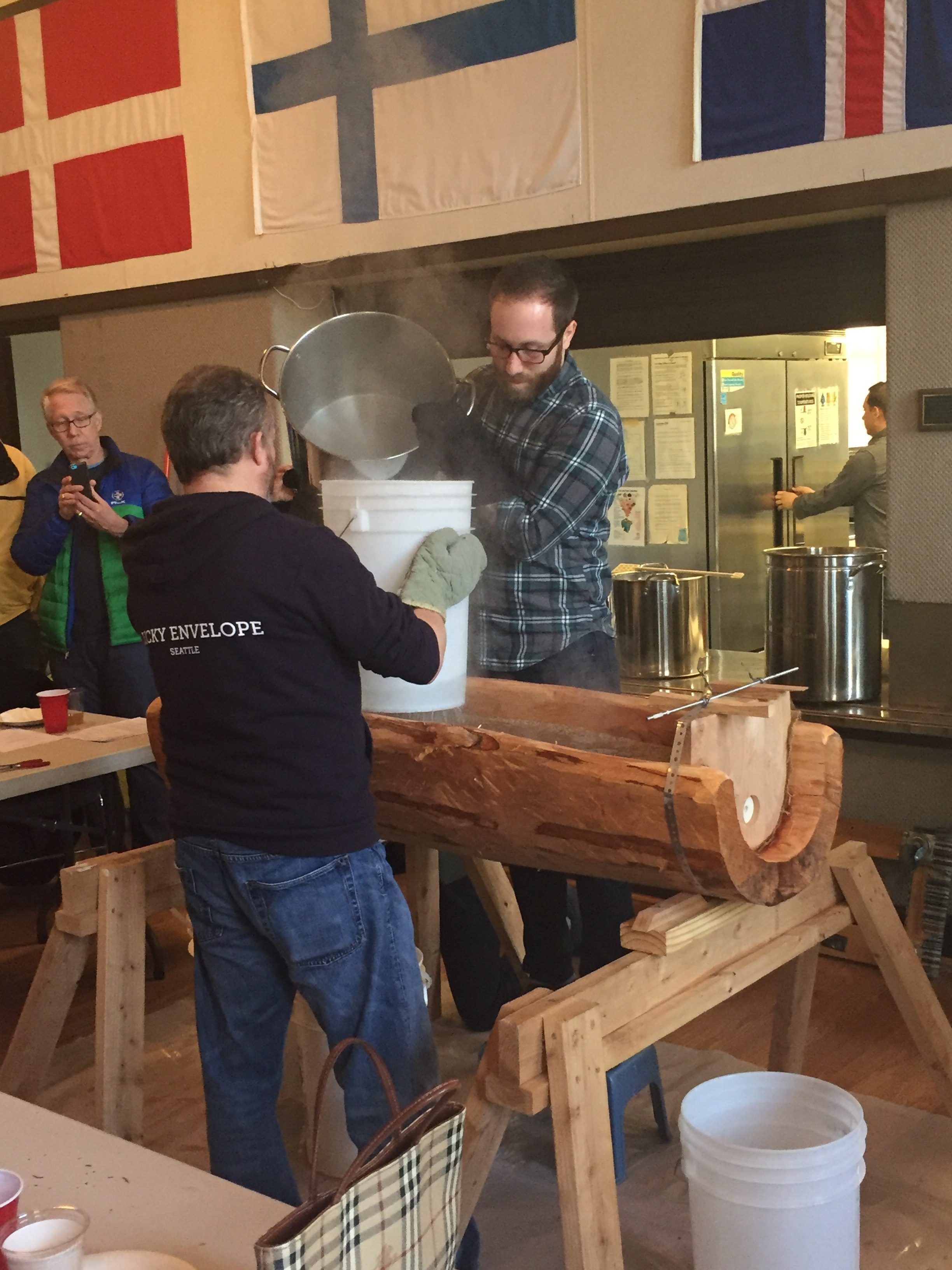The past several months my life has been Sahti. June 2016 I gave a short lecture on brewing and some historical aspects of beer brewing in the Nordic region. With the event, I brewed what I thought was a Sahti (based on one of the only recipes I found at the time and only recently understanding that while it had some stylistic similarities to Sahti, it was more a cross between a Sahti and a Baltic Porter). The lecture went splendidly and covered some basic and overarching aspects of beer from the base ingredients to historical aspects such as the Reinheitsgebot, later transitioning into specific aspects of Finnish brewing and Sahti history. Nestled in my research for that lecture, I discovered Sahti was traditionally brewed with the use of a hollowed out log called a kuurna. Confidence on high from the success of my first public display of beer knowledge, I proposed to the the Nordic Heritage Museum’s (NHM, the Nordic) Adult Programs Coordinator, and my great friend, Sarah Olivo that we actually try to brew a Sahti in this traditional method. The idea was planted. General excitement ensued.
A few months later I began drafting an actual project proposal replete with feasibility study, tentative budget, et al. and with that, I received the formal approval in Sept/Oct 2016 with the event taking place in Feb 2017. Going into December, Sarah and I began attempting to source a log to serve as the kuurna. While initially searching for an Aspen log, I ultimately decided on sourcing an Alder log. My vision for this beer was to not only make an authentic Sahti, but to also live within the prescriptions of the ancient style with how the beer used to be brewed with whatever ingredients were local and available. This Sahti started turning into a wonderful blend of historic techniques (updated with some contemporary brewing technology and science) with local ingredients, all while remaining respectful of the traditional beer style. The alder log provides a great nod to the history of the NW region as many NW tribes commonly used the wood to smoke salmon.
Many aspects of this project involved learning a titanic amount of information about each individual aspect, none more than getting this kuurna built. Being such an esoteric beer style and technique, there is no definitive, or even indefinite, guide to building a kuurna. Many posts online simply state they used X-size log, etc…etc…., and many aspects of sourcing an appropriately sized log to brew a desired amount of beer simply aren’t available. I’m not a math person and I found myself googling, “How to calculate the volume of a partially-filled, partial cylinder.” Luckily other less-math inclined individuals have also required such a tool and generous math-proficient individuals stepped up to create automatic online calculators. For a 10gal all-grain batch with 27lbs of grain, I used a 5′ alder log with ~12″ internal diameter (18″ external diameter with 2-3″ walls). The test batch picture with the filled kuurna above was holding 12gal water, 27lbs grain, juniper, and slats. I am not writing this as a definitive guide to building a kuurna, but I hope some of this info helps others in their endeavors. If you have any questions or want more information, feel free to shoot me an email. I had 2 kuurnas built, one to do a test batch and the other for the actual class. I originally didn’t know if you could reuse a kuurna, hence getting 2, although you are able to reuse them (we decided to power wash them and store them upside-down in a dry space).
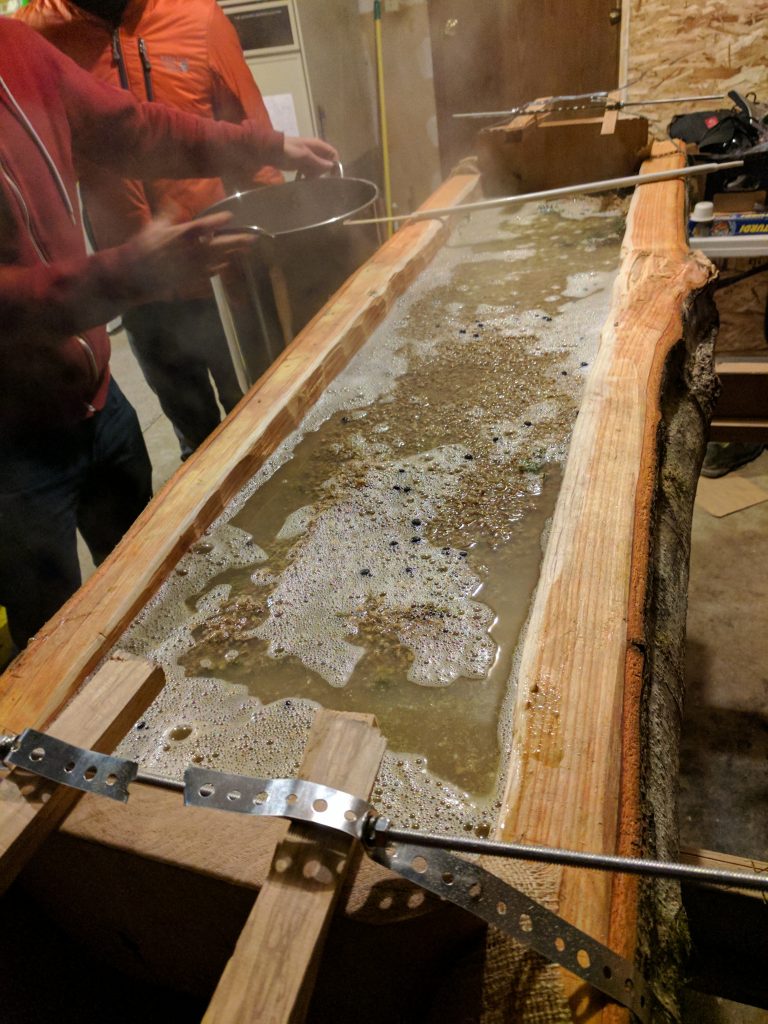 After the initial kuurna was completed, I was able to brew a test batch to not only test the recipe and make any according changes, but to also figure out how to best work with the kuurna and hope to discover any potential issues that may arise during the class. One thing to understand about my brewing history is that while I have been brewing for over 6 years, this test batch was actually my FIRST all-grain batch. That’s right, I arranged to teach a brewing class about an esoteric beer using an arcane brewing style, and I had yet to even use the base technique a single time before this test batch. Audacious?… Foolish? I understood the underlying principles of all-grain for years but that is still vastly different from actually doing the thing. I have been party to friends brewing all-grain, read about it in countless articles, been on numerous brewing tours, and on and on but now had to actually learn not only do it myself, but know it well enough to teach and talk about. I had to know the process well enough to concomitantly present on Sahti as a style, discuss the history and cultural aspect of Sahti, and engage and answer questions with class participants all while monitoring temperatures and times to actually brew the beer within the timeline of the class. When I told the class that this is only my second all-grain batch, the homebrewers in attendance stood aghast. It was fantastic.
After the initial kuurna was completed, I was able to brew a test batch to not only test the recipe and make any according changes, but to also figure out how to best work with the kuurna and hope to discover any potential issues that may arise during the class. One thing to understand about my brewing history is that while I have been brewing for over 6 years, this test batch was actually my FIRST all-grain batch. That’s right, I arranged to teach a brewing class about an esoteric beer using an arcane brewing style, and I had yet to even use the base technique a single time before this test batch. Audacious?… Foolish? I understood the underlying principles of all-grain for years but that is still vastly different from actually doing the thing. I have been party to friends brewing all-grain, read about it in countless articles, been on numerous brewing tours, and on and on but now had to actually learn not only do it myself, but know it well enough to teach and talk about. I had to know the process well enough to concomitantly present on Sahti as a style, discuss the history and cultural aspect of Sahti, and engage and answer questions with class participants all while monitoring temperatures and times to actually brew the beer within the timeline of the class. When I told the class that this is only my second all-grain batch, the homebrewers in attendance stood aghast. It was fantastic.
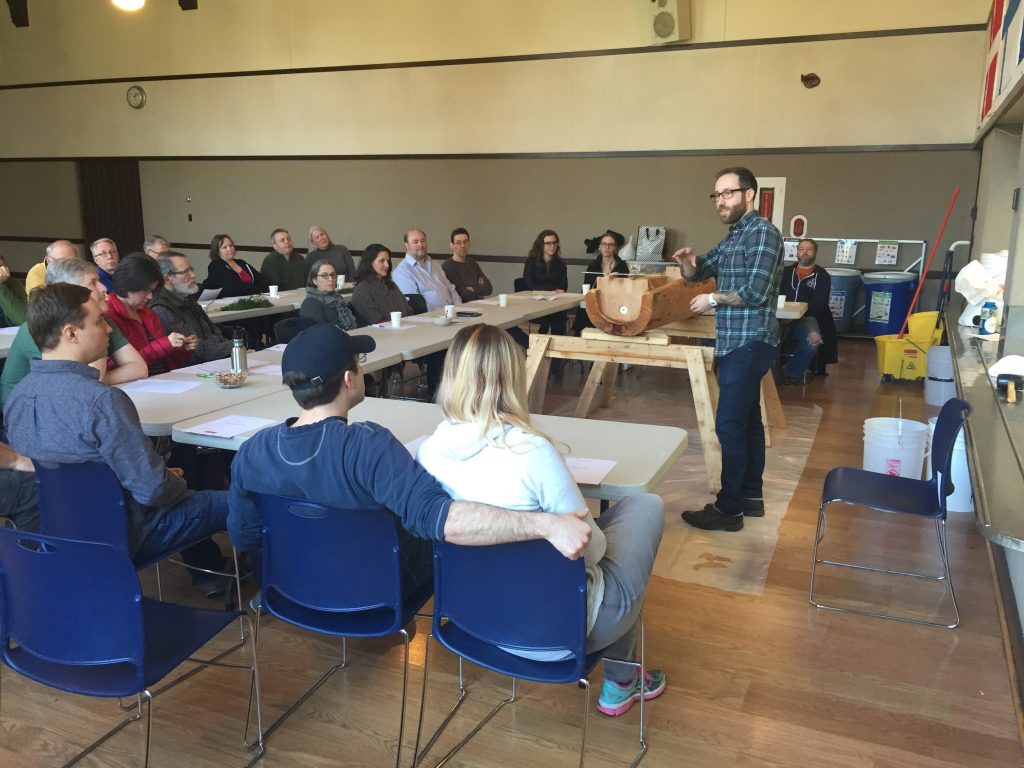 With the insight gained from the test batch, I was ready for the actual class. Oddly, I wasn’t nervous or anxious. While I’m not a terrible public speaker, it is always nerve-racking to give a speech and my normal presentation anxiety was absent. Talking to my girlfriend Sara, she framed it similarly to my grad school thesis. Both projects were the work of several months – centered on a topic that I have delved so deeply that I can talk about until you beg me to stop. The one aspect I was most anxious about was that the class was 4 hours long… and I have to basically talk for all of it. I knew there would be times where I’m running around setting up the next step in brewing, but I didn’t want there to be any open time where I was not prepared to say at least something about the current process or history of Sahti. I wanted to set a list of talking topics so that at any lull, I can have a quick reference of good topics to talk about. It was only after 10pm that I was able to create a bulleted list since much of the day before the class involved setting up the class and moving the staggering amount of equipment between my apartment and NHM (I’m not exaggerating, it filled half my living room). I was never able to actually review my talking points, the morning setup became involved when we had a crack in the kuurna, and I taught the class completely by going with the flow. Luckily I can talk about beer for a loooong time. We originally opened the class up to 25 attendees… sold it out… later opened up an additional 5 spaces…and sold them out for a class of 30!
With the insight gained from the test batch, I was ready for the actual class. Oddly, I wasn’t nervous or anxious. While I’m not a terrible public speaker, it is always nerve-racking to give a speech and my normal presentation anxiety was absent. Talking to my girlfriend Sara, she framed it similarly to my grad school thesis. Both projects were the work of several months – centered on a topic that I have delved so deeply that I can talk about until you beg me to stop. The one aspect I was most anxious about was that the class was 4 hours long… and I have to basically talk for all of it. I knew there would be times where I’m running around setting up the next step in brewing, but I didn’t want there to be any open time where I was not prepared to say at least something about the current process or history of Sahti. I wanted to set a list of talking topics so that at any lull, I can have a quick reference of good topics to talk about. It was only after 10pm that I was able to create a bulleted list since much of the day before the class involved setting up the class and moving the staggering amount of equipment between my apartment and NHM (I’m not exaggerating, it filled half my living room). I was never able to actually review my talking points, the morning setup became involved when we had a crack in the kuurna, and I taught the class completely by going with the flow. Luckily I can talk about beer for a loooong time. We originally opened the class up to 25 attendees… sold it out… later opened up an additional 5 spaces…and sold them out for a class of 30!
 A goal of mine for the class was to encourage participation to really make this a “community beer.” I didn’t want a formal lecture and for people to sit and watch for 4 hours. One of my favorite aspects of the class occurred when we were going to create the juniper lattice in the kuurna. Before the class, I boiled the juniper in the strike water to both sanitize the juniper and infuse the water with the juniper essence. I laid the juniper on a cart during the class, brought out the cart and explained how the juniper serves as a sieve to filter the grains from the wort. After describing what we were trying to achieve with the juniper lattice, I encouraged the whole class to come up and arrange the juniper in the kuurna. Several other people helped at different throughout the class from stirring the grains, to helping lauter, and watch times and temperatures. Even at one point when I was running around setting things up, a gentleman by the name of Brad informed me that he has witnessed his wife and mother-in-law make truly authentic Sahti several times back in Finland. He offered to stand up and orate some of his tales of watching them brew traditional Sahti. It truly was a community effort and I am proud that so many people were involved in brewing this beer!
A goal of mine for the class was to encourage participation to really make this a “community beer.” I didn’t want a formal lecture and for people to sit and watch for 4 hours. One of my favorite aspects of the class occurred when we were going to create the juniper lattice in the kuurna. Before the class, I boiled the juniper in the strike water to both sanitize the juniper and infuse the water with the juniper essence. I laid the juniper on a cart during the class, brought out the cart and explained how the juniper serves as a sieve to filter the grains from the wort. After describing what we were trying to achieve with the juniper lattice, I encouraged the whole class to come up and arrange the juniper in the kuurna. Several other people helped at different throughout the class from stirring the grains, to helping lauter, and watch times and temperatures. Even at one point when I was running around setting things up, a gentleman by the name of Brad informed me that he has witnessed his wife and mother-in-law make truly authentic Sahti several times back in Finland. He offered to stand up and orate some of his tales of watching them brew traditional Sahti. It truly was a community effort and I am proud that so many people were involved in brewing this beer!
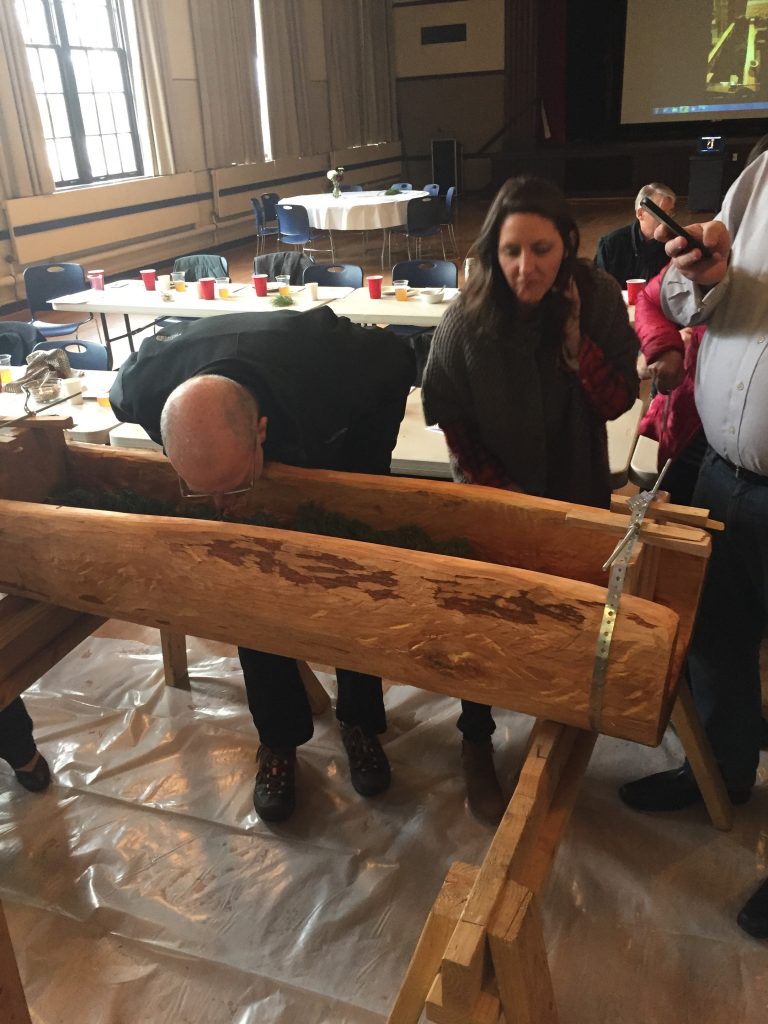 Another goal of mine was to make the brewing of this beer a mix of historic and contemporary practices along with a mix of authentic and local ingredients. The alder log is the first nod to this mix. Sahti was traditionally brewed with whatever was available on one’s farm and often meant the majority of the grain bill consisted of a single type of barley with some rye added. I chose to have the majority of our grain bill be 2-row, a common base malt, with 66% 2-row, 18.5% rye, and 15% Munich. I love the spice that higher rye percentage adds and added Munich to grant the beer a deeper color and a bit of that sweetness and breadiness (gah, I love Munich). Continuing the blend of authentic and local, I was able to harvest the juniper for the brew from several large juniper trees flanking the entrance to the Nordic! Not just local, harvesting the juniper from just outside the building you are brewing in is about as hyperlocal as you can get. We did use a bit of hops added during the runoff (because I forgot to scatter them on top of the juniper before lautering), which still mixed the historic and contemporary as hops were introduced to Finland in the 15th century. My research indicated that many of the hops would have been dried and stored for a while, likely oxidizing their flavors. We used hop pellets although I am interested in attempting this in the future.
Another goal of mine was to make the brewing of this beer a mix of historic and contemporary practices along with a mix of authentic and local ingredients. The alder log is the first nod to this mix. Sahti was traditionally brewed with whatever was available on one’s farm and often meant the majority of the grain bill consisted of a single type of barley with some rye added. I chose to have the majority of our grain bill be 2-row, a common base malt, with 66% 2-row, 18.5% rye, and 15% Munich. I love the spice that higher rye percentage adds and added Munich to grant the beer a deeper color and a bit of that sweetness and breadiness (gah, I love Munich). Continuing the blend of authentic and local, I was able to harvest the juniper for the brew from several large juniper trees flanking the entrance to the Nordic! Not just local, harvesting the juniper from just outside the building you are brewing in is about as hyperlocal as you can get. We did use a bit of hops added during the runoff (because I forgot to scatter them on top of the juniper before lautering), which still mixed the historic and contemporary as hops were introduced to Finland in the 15th century. My research indicated that many of the hops would have been dried and stored for a while, likely oxidizing their flavors. We used hop pellets although I am interested in attempting this in the future.
The whole brew took 4 hours, chilling the wort and pitching the yeast nearly down to the minute. During the class we sampled the Sahti I made from the test batch and discussed the differences in flavor from using two different yeasts. It was great having a concrete example of the same beer fermented with two different yeasts to showcase how profound an impact yeast and fermentation can have on a beer (in the test batch we used normal bakers yeast – I originally tried to source Finnish bakers yeast, but ended up settling for yeast from a Finnish bakery where they thought it may be similar- and Weihenstephen) and to try a (very similar) beer to what we were brewing that day. Most people, including myself, preferred the actual brewers yeast over the bakers yeast, although there were a 3-4 people who preferred the bakers yeast. The Finnish fellow Brad even commented that the bakers yeast was more authentic and similar to the traditional Sahtis he had back in Finland.
Overall we had a sold-out class, brewed a great, juniper-y beer, and learned much about Sahti. Everyone had a great time brewing and learning about this traditional Finnish beer and I think drinking the Sahti from the test batch helped everyone come together to genuinely make this a Northwest, community beer. I hope to see many of the class attendees back at the Nordic for the Kalevala Festival (March 26th, 2017) where they will get to take home their own bomber of Sahti and we will be pouring samples of what remains of the batch for festival patrons to enjoy. Based on the success of the class, I was commissioned by the Nordic to brew another batch of Sahti to sample at an upcoming event with a traveling Sauna and I will be repeating this Sahti brewing class in Fall 2017 (currently scheduled for 09/23/2017)! I want to finally thank the Nordic for putting on such relevant and engaging programs, my friend Sarah Olivo for making this event possible in the first place, and my wonderful girlfriend Sara for endlessly supporting me and constantly listening to me babble about beer. Good things to come… stay tuned!!
